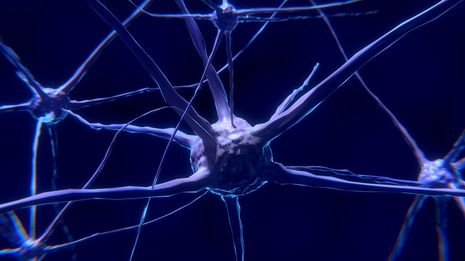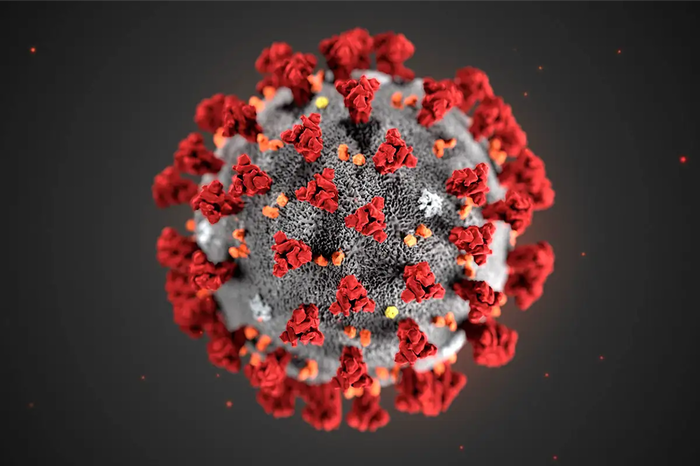Cambridge Spotlight: Diagnosing Dementia with Artificial Intelligence
In this issue of Cambridge Spotlight, Science Editor Sambhavi Sneha Kumar explains a revolutionary new artificial intelligence model developed by researchers of the University of Cambridge to predict whether or not certain patients will go on to develop dementia.

Dementia remains one of the most debilitating and heart-wrenching neurological conditions humanity has to face, arising most often with old age following Alzheimer’s disease. The struggle of having a loved one go through dementia is sadly familiar to many, and awareness in the media of the confusion and distress experienced by sufferers themselves is starting to increase (such as Florian Zeller’s award winning 2020 film The Father), as they battle symptoms such as memory problems, agitation, psychotic hallucinations and depression. It is no wonder that the prevention, diagnosis and management of dementia are such active areas of research - and researchers at Cambridge and Addenbrooke’s Hospital may have reached an important new milestone.
“Sufferers battle symptoms such as memory problems, agitation, psychotic hallucinations and depression.”
One of the major challenges with Alzheimer’s disease is predicting exactly how the condition will change. The standard neurological progression for Alzheimer’s disease involves decline from normal cognitive ability to mild cognitive impairment (when an individual’s mental processing, reasoning and memory may drop below what is expected for their age and education level, but not enough to interfere with their daily living) and then eventually to dementia. Of course, understanding this sequence is key for clinicians and family members to ensure that the best management and support systems can be put in place, but the progression is not quite as simple as it may sound. First of all, only some individuals with mild cognitive impairment will go on to develop dementia. Many will remain stable. Some may even remit, seeing an improvement in their cognitive ability, though this is rather rare. Therefore, diagnosing dementia can sometimes be a minefield for clinicians, as there is a wide variety of reasons why someone may experience mild cognitive impairment. Even if progression to dementia is a risk, it can be hard to speculate when this will occur. Despite the potential clinical benefits of being able to identify dementia as early as possible, this area of diagnosis was somewhat grey until recently. That’s when Professor Zoe Kourtzi and Joseph Giorgio (from the Department of Psychology at the University of Cambridge) and their colleagues come in.
The researchers were keen to find a way to model the progression from mild cognitive impairment (MCI) to dementia, and wanted to go beyond putting patients into the two discrete categories ‘stable MCI’ and ‘progressive MCI’. Instead, they tried to move to using continuous measurements, allowing for more accurate predictions for each patient. Healthcare workers are increasingly striving to ensure that treatment and management plans are best catered to individual patient’s needs, and with the progression to dementia being so unpredictable, creating a reliable model has the potential to be extremely useful.
“Healthcare workers are increasingly striving to ensure that treatment and management plans are best catered to individual patient’s needs, and with the progression to dementia being so unpredictable, creating a reliable model has the potential to be extremely useful”
The team started off by identifying the best characteristic to differentiate patients into stable and progressive MCI, which turned out to be an assessment of memory. They also decided to superimpose this analysis with data related to affective scores: that is, relating to an individual’s mood. They demonstrated that scores associated with mild depression and memory dysfunction could be used to distinguish between stable and progressive MCI, and therefore believe that this could be useful in ensuring that patients are not misdiagnosed with Alzheimer’s disease due to other, underlying psychological factors. Additionally, rather than leaving stable and progressive MCI as two distinct classes, they also assessed the theoretical ‘distance’ of a given score from the stable MCI prototype, allowing them to produce a scalar projection of disease progression.
They also considered a specific biomarker that would be able to predict memory capability and discriminate between stable and progressive MCI on an individual level - this turned out to be atrophy of the brain’s grey matter due to Alzheimer’s disease. Whilst the term ‘grey matter’ is sometimes thrown around medical and scientific drama shows to broadly refer to the brain, we are actually considering a specific type of neural tissue. Grey matter is parts of neurones and other ‘helper’ cells in the nervous system that do not have a coating of myelin, a fatty substance that can increase the rates of conduction of nervous impulses. Atrophy of grey matter in particular regions of the brain could even be related to specific aspects of cognitive impairment, based on what functions the affected part usually carries out. It is well established that Alzheimer’s disease can be associated with grey matter abnormality, and recent research has shown that surface analysis of grey matter morphology can shed light on an individual’s stage of Alzheimer’s Disease. Therefore, grey matter atropgy was clearly another useful parameter for the Cambridge team to assess. Combining this with this their other research, they achieved three useful goals:
- To predict whether or not an individual would progress from MCI to dementia, whilst minimising the chances of a mood-related factor affecting this conclusion
- To use grey matter atrophy as an easily interpretable measure of Alzheimer’s disease pathology
- To represent disease trajectories on an individual level with their model, allowing for the prediction of disease projection on an individual level
Professor Kourtzi and her colleagues have been tackling one arm of the battle against Alzheimer’s: the diagnosis. But what does the future hold for the treatment of dementia? There are currently many ideas in place: for example, using monoclonal antibodies as part of therapy to try to clear the beta-amyloid plaques in the brain that are thought to play a major role in Alzheimer’s pathogenesis, or using cholinesterase inhibitors to try to increase the concentration of the neurotransmitter acetylcholine in the brain following death of cholinergic neurones. Alzheimer’s disease may well just be another example of how the human body begins to break down with age. As our medical and scientific technology continues to advance and prolong our lifespans, we will likely need to keep pushing the frontiers of research to meet the new challenges that surface.
 News / Pembroke to convert listed office building into accom9 December 2025
News / Pembroke to convert listed office building into accom9 December 2025 News / Gov declares £31m bus investment for Cambridge8 December 2025
News / Gov declares £31m bus investment for Cambridge8 December 2025 Features / Searching for community in queer Cambridge10 December 2025
Features / Searching for community in queer Cambridge10 December 2025 News / Uni redundancy consultation ‘falls short of legal duties’, unions say6 December 2025
News / Uni redundancy consultation ‘falls short of legal duties’, unions say6 December 2025 Lifestyle / Into the groove, out of the club9 December 2025
Lifestyle / Into the groove, out of the club9 December 2025










